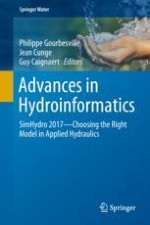2018 | OriginalPaper | Buchkapitel
Large-Scale GIS-Based Urban Flood Modelling: A Case Study on the City of Ouagadougou
verfasst von : Christophe Bouvier, Nanée Chahinian, Marko Adamovic, Claire Cassé, Anne Crespy, Agnès Crès, Matias Alcoba
Erschienen in: Advances in Hydroinformatics
Verlag: Springer Singapore
Aktivieren Sie unsere intelligente Suche, um passende Fachinhalte oder Patente zu finden.
Wählen Sie Textabschnitte aus um mit Künstlicher Intelligenz passenden Patente zu finden. powered by
Markieren Sie Textabschnitte, um KI-gestützt weitere passende Inhalte zu finden. powered by
